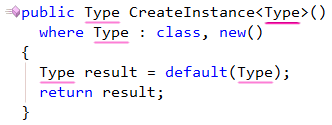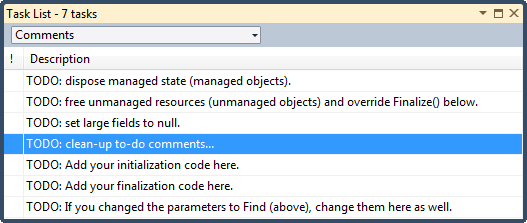A switch statement executes logic, dependent on the value of a given expression (parameter). The types of values a switch statement operates on can be boolean, enum, integral types, and strings. Each switch statement can contain any number of case statements, but no two case constants within the same switch statement can have the same value. Each case statement defines a value to compare against the original expression. You may also include a default label following all other case statements. If none of the other choices match, then the default choice is taken and its statements are executed. If there is no default label, control is transferred outside the switch.
Read more…
CodeRush has the Highlighting All References feature, based on the Tab to Next Reference feature, with the difference that you do not actually navigate between references. The feature simply highlights the current identifier and all its references. The default shortcut to apply the reference highlighting is Ctrl+Alt+U. Once performed on an identifier, you will see the identifier and its references highlighted in pink:

Read more…
Occasionally you may need to note a place in a source file that needs to be revisited later for correction or improvements. There are three standard codes used to designate such places: TODO, HACK and UNDONE. Visual Studio has the built-in Task List tool window, which shows the list of such comments. To open the list, go to View menu -> Task List:

Read more…
Element Highlighting visualization feature paints identifiers inside source code in a different color according to your preference. It can paint the following elements:
- classes
- structures
- interfaces
- enumerations
- methods
- properties
- fields
- events
- anonymous elements
Read more…

